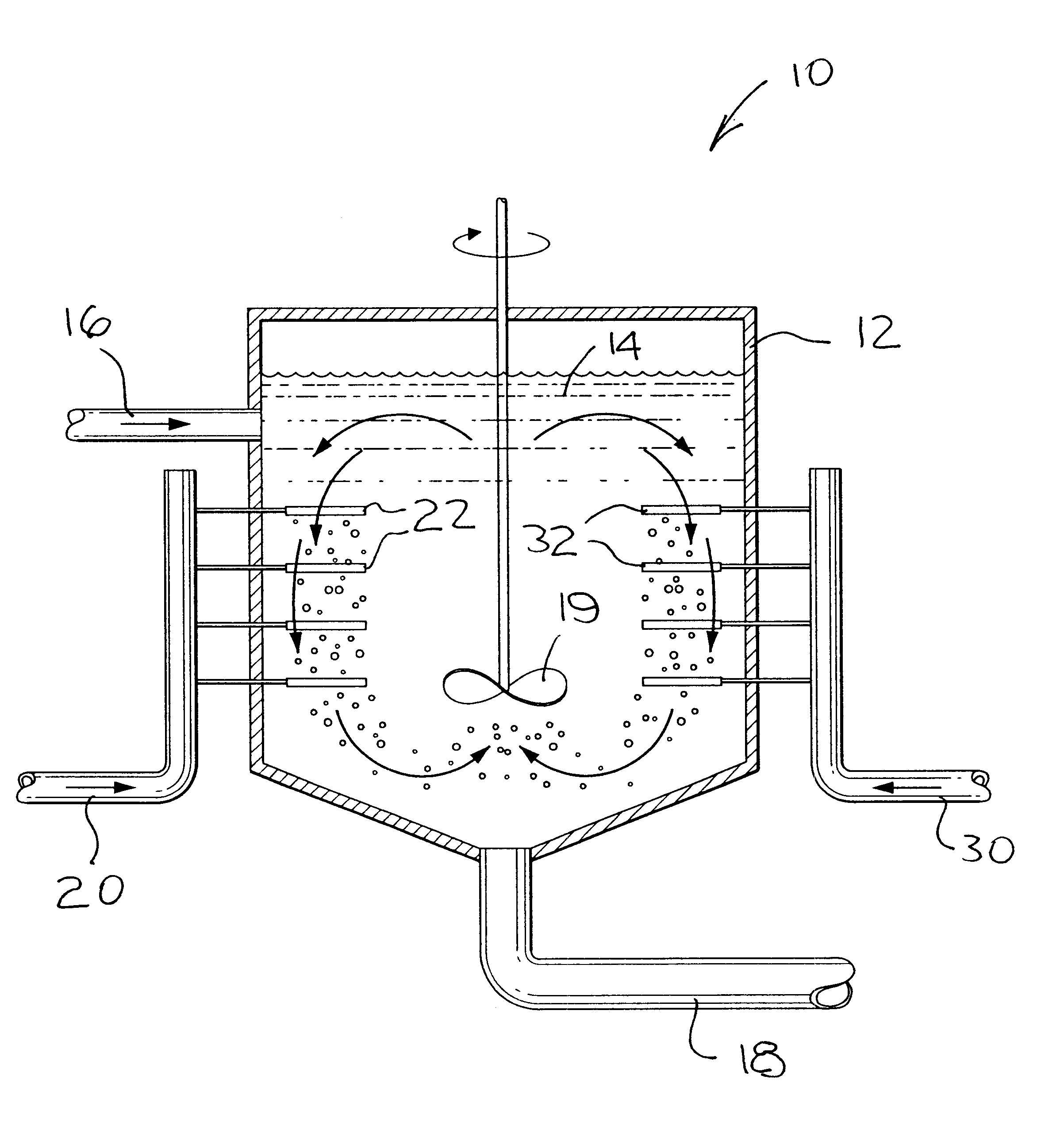Wastewater treatment with alkanes
a technology of wastewater and alkanes, applied in water treatment compounds, water/sludge/sewage treatment, chemistry apparatus and processes, etc., can solve the problems of reducing the rate of increase of bacterial mass, and the most readily available carbon source for established microbial populations
- Summary
- Abstract
- Description
- Claims
- Application Information
AI Technical Summary
Benefits of technology
Problems solved by technology
Method used
Image
Examples
Embodiment Construction
Return activated-sludge (RAS) was collected from a municipal wastewater treatment plant located in Massachusetts. The RAS was drawn from the return line of a settling tank (after treatment in an aeration tank) in an activated-sludge process municipal wastewater treatment plant. RAS consists of the mixture of old and new aerobic bacterial cells, which have settled out in the settling tank over a period of time. The activated-sludge was introduced into a bioreactor vessel comprising aeration diffusers, a constant speed electric mixer with propeller, an air-supply pump, and vent line, as illustrated in FIG. 10. The bioreactor 70 shown in FIG. 10 includes a containment vessel 71 with a screw down cover 72 sealed with a gasket 73. A vent line 74 extends through the cover 72. An impeller 75 mounted in the vessel 71 is rotated by a motor assembly 76. An air supply pump 80 is connected to an air feed line 81. A butane injection port 82 is connected to the air feed line 81. A diffuser 84 is ...
PUM
| Property | Measurement | Unit |
|---|---|---|
| weight percent | aaaaa | aaaaa |
| weight percent | aaaaa | aaaaa |
| weight percent | aaaaa | aaaaa |
Abstract
Description
Claims
Application Information
 Login to View More
Login to View More - R&D
- Intellectual Property
- Life Sciences
- Materials
- Tech Scout
- Unparalleled Data Quality
- Higher Quality Content
- 60% Fewer Hallucinations
Browse by: Latest US Patents, China's latest patents, Technical Efficacy Thesaurus, Application Domain, Technology Topic, Popular Technical Reports.
© 2025 PatSnap. All rights reserved.Legal|Privacy policy|Modern Slavery Act Transparency Statement|Sitemap|About US| Contact US: help@patsnap.com



